In 2024, approximately 402.74 million terabytes of data were generated daily, encompassing newly created, captured, copied and consumed information, reports Statista.
Additionally, TechBusinessNews states, “Ninety percent of the world’s data has been produced in just the last two years. Over the past 13 years, data generation has increased by a factor of 60. Projections indicate that this figure could reach 181 zettabytes by 2025, representing a 150% increase.”
Exacerbating the data generation issue, it’s not uncommon for an organization to have at least four different enterprise content management (ECM) platforms, aka content services, and data is often unstructured—making storing and managing all this information an ongoing challenge. In fact, a recent Association for Intelligent Information Management (AIIM) study found that businesses average at least five different ECM platforms.
When fragmented, these foundational systems create an environment called “content sprawl,” which causes problems with security, user adoption and workflow. However, there is help for this confusion! ECM platforms have entered the tech stack to assist organizations with document management, document capture and workflow processes. These systems enable managers to use data monitoring controls that allow end users to locate and receive desired information while enforcing protection against unauthorized consumption.
In addition, to help with compliance and regulations, ECM also ensures proper document retention, version control and security measures. The bonus is the cost savings from eliminating paper-based processes and optimizing workflows.
However, though ECM has been a godsend, performance, security and reliability can still be compromised. Therefore, organizations need to abide by certain data management practices. Here are five best practices to help achieve excellence in managing and monitoring content services.
1. Governance Strategy
A governance strategy is essential for managing the content services platform, and maintaining and revising the plan to keep it in practice is necessary. A governance framework will include policies, procedures, roles and responsibilities covering various usage aspects, such as data access and security, user roles and permissions, document retention, compliance requirements and system configuration.
Monitoring and auditing are also needed to track system usage, performance and security. Regular review of reports on these usage aspects is crucial for identifying user access irregularities and improving processes.
2. Security Requires Scrutiny
Strong access controls, user permissions and encryption protocols are the hallmarks of good security. It’s important to routinely review and audit all security settings to understand the suspicious alert process regarding irregular activity. In addition, be sure to investigate whether or not you have complete visibility into all the necessary content areas to secure information properly.
3. Be Proactive
Observability and monitoring solutions should provide real-time insights into system performance, resource utilization and security events. They should also feature customizable alerts that notify users of potential issues and provide a comprehensive view of the entire stack.
These tools can also employ pre-built automation that targets areas that need wide-angle-lens observability and deep ECM specific monitoring.
4. Baselines
Performance baselines help detect degradation issues early enough to troubleshoot problems and are also helpful for scalability concerns. However, it’s imperative to understand that performance baselines are not static. They must evolve as your environment changes. Therefore, routinely reviewing and updating these baselines to account for changes in system usage, configurations and hardware upgrades are critical. Leveraging artificial intelligence- (AI) and machine learning- (ML) generated baseline forecasts help predict future user adoption and resource consumption trends.
5. Self-Healing Automation
Self-healing automation can save valuable time and reduce the risk of human error. Routine tasks such as data imports, backups and report generation can be automated to increase efficiency and reliability. Tasks such as prebuilt ECM service or process recycling, recovery scripts and app instance restarts are all automation candidates.
Proactive and vigilant monitoring are vital to properly managing your content services. It’s a continuous job, and therefore it’s beneficial to have agentless ECM observability and monitoring that watches and gathers user activity. Monitoring and the user analytics that can be collected with these tools provide accurate benchmarks, help understand performance and significantly assist in proactively avoiding issues.
Implementing the above five best practices can help achieve optimal performance, data security and streamlined document management. Staying up-to-date with industry trends is an essential discipline for effective management and monitoring. Your practices should evolve as content services platforms and new technology evolve.
Up-to-date ECM management processes will ensure seamless operation, better productivity and provide a proactive workflow, giving your organization the edge and confidence needed to be a leader in your industry.

